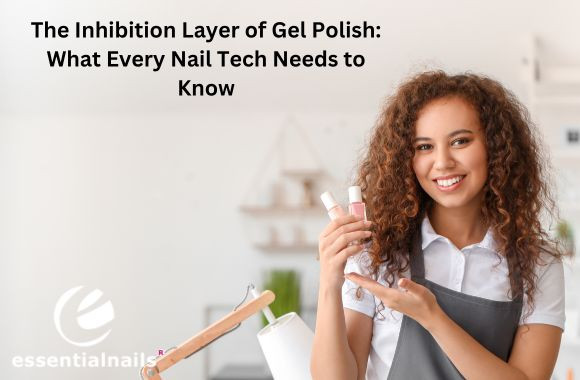The Mysterious Inhibition Layer of Gel Polish: What Every Nail Tech Needs to Know
As a nail technician, understanding the science behind the products you use is crucial for delivering flawless results to your clients. One aspect that often puzzles newcomers to the world of gel polish is the inhibition layer – that sticky, dispersion layer that forms on the surface of the cured gel. We're here to demystify this phenomenon and equip you with the knowledge to tackle it like a pro.
What is the Inhibition Layer?
First things first, let's define what we're dealing with. The inhibition layer, also known as the dispersion layer or the tacky layer, is a thin film that remains uncured on the surface of the gel polish after curing. This layer is created when the gel polish is exposed to oxygen during the curing process, preventing the complete polymerisation (hardening) of the outermost layer.
Why Does it Form?
The formation of the inhibition layer is a natural consequence of the curing process. Gel polishes are cured using ultraviolet (UV) or light-emitting diode (LED) lamps, which initiate a chemical reaction that causes the liquid gel to harden and form a solid, plasticised film. However, the presence of oxygen inhibits this reaction on the surface, leaving a thin, sticky layer behind.
The Purpose of the Inhibition Layer
While the inhibition layer may seem like an annoyance at first, it actually serves an important purpose. This tacky layer helps subsequent coats of gel polish adhere properly to the cured layers beneath, ensuring a strong, long-lasting bond between the layers. Without the inhibition layer, your gel polish manicures might not last as long or could potentially peel off more easily.
Dealing with the Inhibition Layer
Now that you understand the science behind the inhibition layer, it's time to learn how to deal with it effectively. Here are some tips:
- Dehydrate and Decontaminate: Before applying your first coat of gel polish, make sure to properly dehydrate and decontaminate the natural nail surface. This step ensures that the gel polish adheres optimally to the nail plate, creating a strong foundation for your manicure.
- Cap the Free Edge: When applying the final coat of gel polish, be sure to cap the free edge (the tip of the nail) by wrapping the gel polish over and onto the underside of the nail. This helps prevent premature chipping or lifting at the free edge.
- Top It Off: A high-quality, glossy gel top coat is your best friend when it comes to dealing with the inhibition layer. The top coat forms a protective, non-sticky shield over your gel polish, sealing in your hard work and ensuring a long-lasting, flawless finish.
Remember, practice makes perfect! As you gain more experience working with gel polishes, dealing with the inhibition layer will become second nature. Embrace this aspect of the gel polish application process, and you'll be well on your way to delivering stunning, long-lasting manicures that will keep your clients coming back for more.

